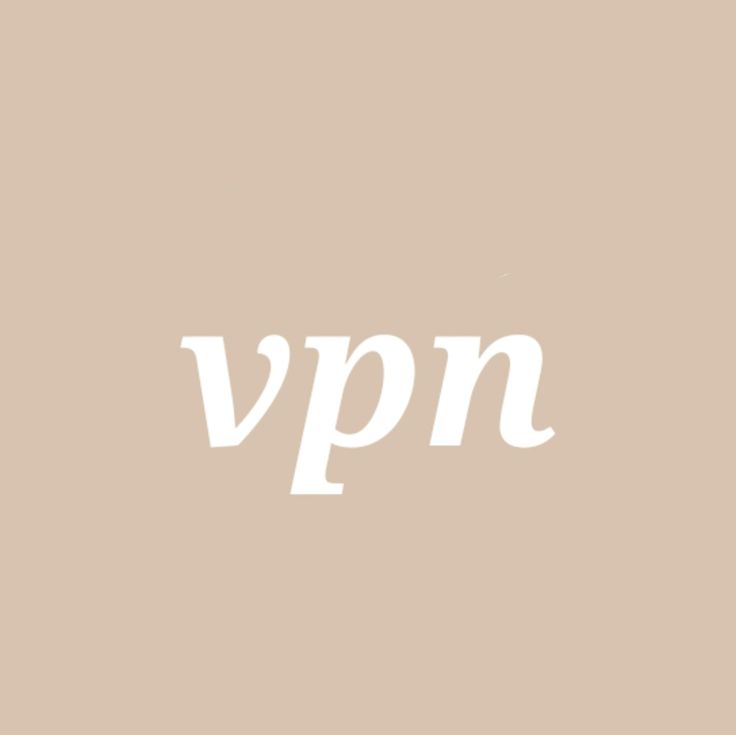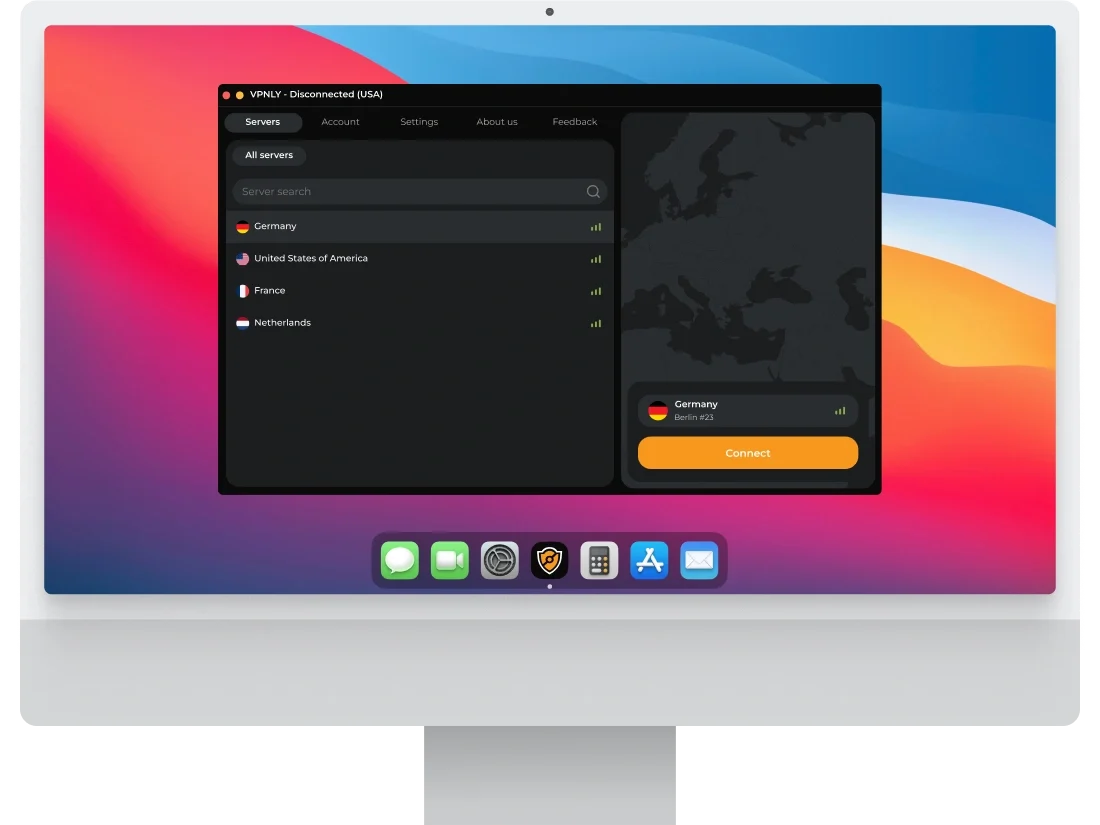
The way we work has changed forever. Gone are the days of rigid office schedules and cubicle farms. Today, remote teams collaborate across continents, fueled by breakthroughs in digital tools that prioritize speed, security, and flexibility.
From cloud-based platforms to AI-driven workflows, technology is rewriting the rules of productivity. Employees now access critical data in real time, attend virtual meetings with crystal-clear clarity, and automate repetitive tasks – all while balancing personal and professional lives.
Secure connections form the backbone of this revolution. Tools like virtual private networks (VPNs) encrypt internet traffic, shielding sensitive information from cyber threats. This is especially vital when teams rely on public Wi-Fi in coffee shops or airports. Paired with dependable internet service providers, these innovations ensure seamless operations without compromising privacy.
Beyond efficiency, modern tech fosters trust. Companies adopt solutions that protect client data and employee communications, creating a safer digital workspace. As we explore emerging trends in later sections – from cost-effective software to cutting-edge collaboration apps – the focus remains clear: innovation isn’t just about doing more. It’s about doing it smarter, faster, and safer.
Digital Transformation in the Remote Work Era
Traditional office walls are crumbling as digital tools reshape collaboration. Teams now operate in fluid environments where cloud platforms and smart communication systems replace cubicles and conference rooms. This shift isn’t just about convenience – it’s a complete overhaul of how businesses function globally.
Leveraging Cloud-Based Platforms
Cloud technology eliminates geographic barriers. Employees access files, edit documents, and share updates instantly through services like Google Workspace or Microsoft 365. Real-time collaboration keeps projects moving faster than email chains or shared drives ever allowed.
Security remains critical. Many companies pair cloud applications with encrypted connections to protect data during transfers. For example, secure servers mask IP addresses when teams work from coffee shops or airports, ensuring sensitive details stay private.
For remote teams facing a rising tide of online deception, AI-driven tools like Bitdefender Scamio serve as essential allies by detecting phishing and scam attempts in real time for safer collaboration. – Placement: After the sentence “Hackers increasingly target distributed teams through phishing schemes, malware, and unsecured networks.” in the section “Cybersecurity Essentials for a Remote Office”.
Redefining Workplace Communication
Messaging apps like Slack and Zoom have evolved beyond basic video calls. They now integrate task management, file sharing, and AI-powered transcription. These tools reduce miscommunication and keep everyone aligned – whether teams are across town or oceans.
Encrypted channels add another layer of safety. Businesses often route communications through private networks to prevent breaches. This approach helps startups and corporations alike maintain trust while scaling operations.
The result? Faster decisions, fewer delays, and workflows that adapt to time zones and lifestyles. Digital transformation isn’t just changing where we work – it’s upgrading how we achieve results together.


Emerging Technologies Boosting Remote Productivity
The next wave of workplace innovation is here – artificial intelligence and automation are reshaping how teams operate. These tools tackle time-consuming tasks while maintaining rigorous privacy security standards, letting employees focus on high-impact work.
Automation and AI Integration
Automation handles repetitive tasks like data entry and scheduling, freeing up hours each week. For example, platforms like Zapier link apps to auto-generate reports, while AI chatbots resolve routine IT queries instantly. This efficiency lets remote workers prioritize creative problem-solving.
Advanced systems also adapt to user behavior. Machine learning algorithms in project management tools predict deadlines and allocate resources. However, these innovations require ironclad privacy policies to protect sensitive information shared across networks.
Security remains central to tech adoption. When AI tools process data through cloud servers, encrypted connections like VPNs mask digital footprints. This ensures compliance with global regulations while maintaining workflow speed.
Companies now blend automation with human oversight. For instance, healthcare providers use AI to transcribe patient notes but route them through secure portals. Such a balance between innovation and privacy security builds trust in distributed teams.
As remote work evolves, transparent privacy policies become competitive advantages. Organizations that pair smart tools with robust safeguards will lead the productivity revolution – no matter where their teams log in from.
The Role of VPN in Secure Remote Connections
In an era where data breaches make headlines, protecting online activities has become non-negotiable. Remote teams rely on encrypted networks to shield sensitive information from prying eyes. These systems create private tunnels for internet traffic, ensuring confidential data stays hidden even on unsecured networks.
How Encrypted Networks Operate
A virtual private network (VPN) acts as a secure bridge between devices and the internet. It scrambles data using protocols – the same standard governments use. This process, called tunneling, wraps information in layers of code as it travels between your laptop and company servers.
These services also mask your real IP address. Instead of showing your location, they assign a temporary one from their global server network.
Advantages for Remote Professionals
Employees working from cafes or airports benefit most. Public Wi-Fi becomes safer since encrypted connections block hackers from intercepting login credentials or client files. Teams can also access region-locked resources, like international cloud databases, without triggering security alerts.


Cybersecurity Essentials for a Remote Office
Remote work thrives on flexibility, but it demands ironclad security practices. Hackers increasingly target distributed teams through phishing schemes, malware, and unsecured networks. Safeguarding digital assets requires a blend of smart tools and proactive habits.
Protecting Sensitive Data on Public Wi-Fi
Public Wi-Fi networks are breeding grounds for cyberattacks. Coffee shops, airports, and hotels often lack encryption, letting hackers intercept login credentials or financial data. Remote workers should avoid accessing sensitive files on these networks without protection.
Encrypted apps create secure tunnels for internet traffic. A reliable VPN app like VPNLY masks your IP address and scrambles data using protocols. This prevents outsiders from viewing your online activity, even on risky connections.

Implementing Advanced Encryption Techniques
Modern encryption standards act as digital armor. AES-256, used by governments and banks, rearranges data into unreadable code without the right decryption key. ChaCha20 offers similar protection with faster speeds for mobile devices.
Companies often combine these methods with private network setups. Dedicated VPN apps automatically encrypt internet traffic across devices, ensuring consistent safety. Multi-factor authentication adds another layer by requiring secondary verification steps.
Practical steps matter: Always enable encryption settings on routers and apps. Use a VPN app when traveling, and avoid sharing files over public hotspots. Regular software updates patch vulnerabilities before hackers exploit them.
Product Roundup: Top Tech Tools for Remote Work
Selecting the right tools can make or break remote work efficiency. From project management apps to encrypted networks, today’s solutions blend power with simplicity. We’ve tested top platforms to help teams collaborate safely and seamlessly.
Comparing Leading Product Features
Trello and Asana lead in visual task management. Trello’s card-based system suits agile workflows, while Asana offers timeline views for complex projects. Both integrate with cloud storage like Google Drive, letting teams centralize files without switching tabs.
For communication, Slack outperforms with threaded messaging and app integrations. Microsoft Teams excels in video call quality – ideal for client meetings. Free tiers exist, but paid plans unlock advanced analytics and unlimited message history.
Free VPN options work for light use but lack premium features like split tunneling. Paid services often include malware blockers and dedicated IPs – worth the investment for handling sensitive data. By mixing specialized apps with secure networks, remote workers build tech stacks that adapt to any challenge.
Tools Addressing Connectivity & Speed
Reliable internet is the lifeblood of modern remote work. Connection speeds dictate productivity, especially when teams handle video calls, cloud-based apps, and large file transfers. Yet, factors like network congestion, outdated routers, and distance from servers can throttle performance. Addressing these challenges requires smart tech choices.
Minimizing Internet Speed Loss in Remote Settings
Choosing a service provider with robust infrastructure is step one. Providers like Google Fiber or Xfinity offer gigabit plans that reduce latency during peak hours. PCMag’s 2023 speed tests show fiber-optic networks deliver 95% of advertised speeds – crucial for seamless Zoom meetings and real-time collaboration.
Network tools also play a role. Quality routers with Wi-Fi 6 support handle multiple devices without slowdowns. Mesh systems like eero extend coverage in large homes, eliminating dead zones. Pairing these with wired Ethernet connections ensures stable speeds for data-heavy tasks.
Online privacy tools play a dual role. While encrypting data, some VPNs use protocols like WireGuard to minimize speed loss. Split tunneling lets users route only sensitive traffic through encrypted channels, preserving bandwidth for video streams or file uploads.
Practical fixes matter too. Regularly rebooting modems clears cached errors. Scheduling large downloads during off-peak hours avoids network strain. Tools like Cloudflare’s Speed Test help identify bottlenecks, while browser extensions block trackers that hog resources.
Balancing speed and security isn’t optional. With the right service provider and adaptive tech, remote teams can maintain blistering connection speeds without sacrificing online privacy. The result? Fewer frozen screens, faster workflows, and happier clients.


Integrating Virtual Private Networks in Tech Stacks
Behind every secure remote workflow lies a carefully woven network of technologies. Modern businesses blend encrypted connections with productivity tools, creating ecosystems where security enhances – not hinders – daily operations. This integration ensures sensitive data stays protected while employees focus on high-value tasks.
Ensuring Seamless Remote Access
Successful integration starts with automatic connections. Tools that launch encrypted tunnels during device login reduce human error. Cloud platforms like AWS and Azure now offer built-in protocol support, letting companies customize security layers without sacrificing user experience.
Balancing protection with productivity requires smart configurations. Split tunneling routes only critical online activities through encrypted channels, preserving bandwidth for video calls or large uploads. Healthcare providers, for example, use this method to securely access patient records while streaming training modules.
Leading enterprises pair encrypted networks with identity management systems. Multi-factor authentication gates combine with always-on VPN connections, creating frictionless access for authorized users. Retail giants like Target use this approach to protect customer data across 1,900 stores and remote teams.
As cyberthreats evolve, layered security becomes non-negotiable. By embedding encrypted protocols into every tool – from CRMs to video conferencing apps – companies build tech stacks that defend against breaches while supporting fluid online activities. The result? Teams work faster, safer, and with fewer interruptions.

Innovative Collaboration Software for Teamwork
Collaboration tools are evolving faster than ever. Platforms like ClickUp and Notion combine task management with real-time editing, letting teams brainstorm and execute ideas in one space. Features like shared whiteboards and automated progress tracking eliminate fragmented workflows.
Security remains central to these innovations. When teams share sensitive contracts or financial data, encrypted connections become essential. Some service providers embed security protocols directly into their platforms – like end-to-end encryption for file transfers.
Public networks pose unique risks. Employees working from cafes or co-working spaces may need a secure VPN to shield collaborative sessions from snoopers. This is critical when accessing proprietary databases or discussing confidential projects.
Leading service providers now partner with cybersecurity firms. For example, Microsoft Teams integrates with private network solutions to mask IP addresses during video calls. Such partnerships let organizations set up layered defenses without complicating user experiences.
When choosing tools, prioritize platforms with built-in security audits. Pair them with trusted service providers offering 24/7 threat monitoring. For added protection, set up a VPN to encrypt data before it reaches collaboration apps – turning teamwork hubs into fortresses against breaches.
Enhancing Online Privacy and Data Security
As remote work becomes standard, protecting sensitive information demands proactive strategies. Balancing accessibility with ironclad safeguards requires clear policies and smart tech choices. Let’s explore how organizations can build layered defenses against evolving threats.
Crafting Effective Privacy Policies
Strong privacy policies form the foundation of secure remote operations. These documents outline how companies collect, store, and share data. They should specify encryption standards, breach protocols, and employee responsibilities. For example, requiring multi-factor authentication for database access reduces unauthorized entry risks.
Regular updates keep policies aligned with new regulations like GDPR or CCPA. Include input from legal and IT teams to address regional laws and technical realities. Transparent policies also build client trust – 94% of consumers prefer businesses with clear data practices, per Cisco’s 2023 report.
Utilizing Private Network Servers for Confidential Communication
Server location impacts privacy more than many realize. Data routed through countries with weak privacy laws becomes vulnerable to surveillance. Choosing network servers based in regions with strict regulations – like Switzerland or Iceland – adds legal protection.
Secure server connections mask real IP addresses during video calls or file transfers. This prevents outsiders from tracing activities back to specific devices. Leading providers operate thousands of global servers, letting users manually select optimal locations.
For maximum security, pair these servers with end-to-end encrypted apps like Signal or ProtonMail. Conduct annual audits to verify no unauthorized data leaks occur. As cyberthreats grow smarter, combining policy rigor with technical precision remains the best defense.
Future Trends in Remote Work Technology
Tomorrow’s remote work landscape is being shaped by smarter tools and sharper security protocols. Companies now prioritize solutions that blend productivity with ironclad privacy, driven by advancements in encryption and AI-powered analytics.
New players are entering the privacy tools market. Emerging VPN providers focus on niche needs – like split tunneling for hybrid workers or military-grade encryption for healthcare teams. These services often integrate directly with collaboration platforms, masking IP addresses during file transfers or video calls.
Managing browsing history has become a critical skill. Digital workflows leave traces that hackers exploit. Tools now auto-delete search logs and encrypt activity data, reducing exposure risks. A 2023 Gartner report found 68% of companies now audit employee browsing history to prevent leaks.
Free VPNs are gaining traction as entry-level safeguards. While lacking premium features like dedicated servers, they offer basic encryption for casual use. Many pair these with paid plans for high-risk tasks – a trend expected to grow as remote work expands globally.
Future innovations may include self-learning networks that adjust security levels based on user behavior. Such systems could automatically route sensitive browsing history through encrypted channels while allowing casual streaming on open connections. The goal? Frictionless protection that adapts to every click.
Evaluating the Cost-Effectiveness of Tech Solutions
Smart tech investments separate thriving remote teams from struggling ones. Companies must balance upfront costs with lasting value – especially when choosing security tools and collaboration platforms. Let’s break down what matters for budgets and long-term gains.
Overcoming Challenges in Remote Connectivity
Stable internet defines remote work success. Yet, 58% of professionals face daily disruptions like lagging video calls or dropped files. Addressing these hurdles requires smart strategies to manage traffic and fix connection flaws.
Troubleshooting Common Connection Issues
Unstable Wi-Fi often stems from router placement. Keep it central and elevated – away from microwaves or thick walls. Ethernet cables provide steadier speeds, reducing latency by 65% compared to wireless.
Public networks demand extra caution. Use a VPN free tier to protect privacy when accessing emails at cafes. Cloudflare WARP’s basic plan masks IP addresses while maintaining 90% of original connection speeds.
Test fixes step-by-step: Restart devices, update firmware, then contact your internet service provider if issues persist. Simple changes prevent hours of frustration – and keep projects on track.
Building a Secure Home Network for Remote Work
Home networks have become the new frontline in workplace security. With sensitive data flowing through personal routers and devices, professionals need defenses as robust as those in corporate offices. A single weak link – like an outdated router or unencrypted connection – can expose entire systems to breaches.
Best Practices for Router and Device Protection
Start with firmware updates. Manufacturers patch vulnerabilities monthly, yet 62% of users delay these critical upgrades. Enable automatic updates on routers to stay ahead of hackers. Pair this with strong Wi-Fi passwords – avoid default phrases like “admin” or “password123.”
Dual-band routers add flexibility. Use the 5GHz band for work devices to reduce interference from smart home gadgets on 2.4GHz. Tech reviews praise models like ASUS RT-AX86U for their built-in security scans and parental controls.
Encrypt every connection. WPA3 encryption is now the gold standard, scrambling data so even intercepted signals stay unreadable. For added protection, route traffic through encrypted servers via a trusted VPN. This masks IP addresses and secures data transfers across all devices.
Monitor network activity using tools like Fing or GlassWire. These apps flag unfamiliar devices accessing your Wi-Fi – a common sign of breaches. Combine this with firewall settings that block suspicious inbound traffic.
Industry leaders like Cisco recommend segmenting networks. Create a separate guest network for non-work devices. This limits exposure if a smart TV or thermostat gets compromised. Pair these steps with regular backups to external drives or cloud servers, ensuring data survives worst-case scenarios.
Remote Work Best Practices for a Digital Age
Mastering remote work requires more than just a laptop and Wi-Fi. Teams need structured strategies to maximize efficiency while safeguarding data. Let’s explore actionable steps to streamline workflows and protect digital assets.
Optimizing Workflows with Technology
Automation tools slash time spent on repetitive tasks. Platforms like Asana automate project tracking, while Zapier links apps to sync data instantly. These systems cut manual work by 30%, according to a 2023 McKinsey report.
Secure servers form the backbone of reliable operations. Companies like GitLab use encrypted cloud servers to store code and client data. This ensures 24/7 access without exposing sensitive details during transfers.
Collaboration software keeps teams aligned. Slack’s threaded chats reduce email clutter, and Zoom’s breakout rooms mimic in-person brainstorming. Pair these with password managers like 1Password to protect login credentials.
Regular audits prevent tech service gaps. Buffer schedules quarterly reviews of its tool stack, removing redundant apps and updating security protocols. Employees also receive training on phishing scams and secure file-sharing practices.
For optimal performance, prioritize service providers with uptime guarantees. Microsoft Azure offers 99.9% reliability for cloud storage, minimizing disruptions. Simple habits – like restarting routers weekly – further stabilize connections.
Conclusion
Remote work is no longer a temporary fix – it’s a global standard powered by smarter tools. Cloud collaboration platforms and AI-driven workflows have erased geographic limits, letting teams operate with military precision. Security remains non-negotiable, with encrypted connections shielding sensitive data across public networks and home offices alike.
Integrating privacy-first solutions like VPNs ensures compliance without slowing progress. Fiber-optic networks now deliver 95% of advertised speeds, cutting latency during video calls. This combination of ironclad security protocols and accelerated performance lets professionals focus on innovation, not obstacles.
The future belongs to businesses embracing adaptive tech. Emerging tools like self-learning networks will auto-adjust encryption levels based on risk. As 5G expands and AI refines threat detection, remote work will grow safer and more efficient.
Companies prioritizing both speed and security today will lead tomorrow’s distributed workforce. They’ll turn challenges into opportunities – proving that with the right tech, distance is just a detail.
- 1share
- Facebook0
- Pinterest1
- Twitter0
- Reddit0


